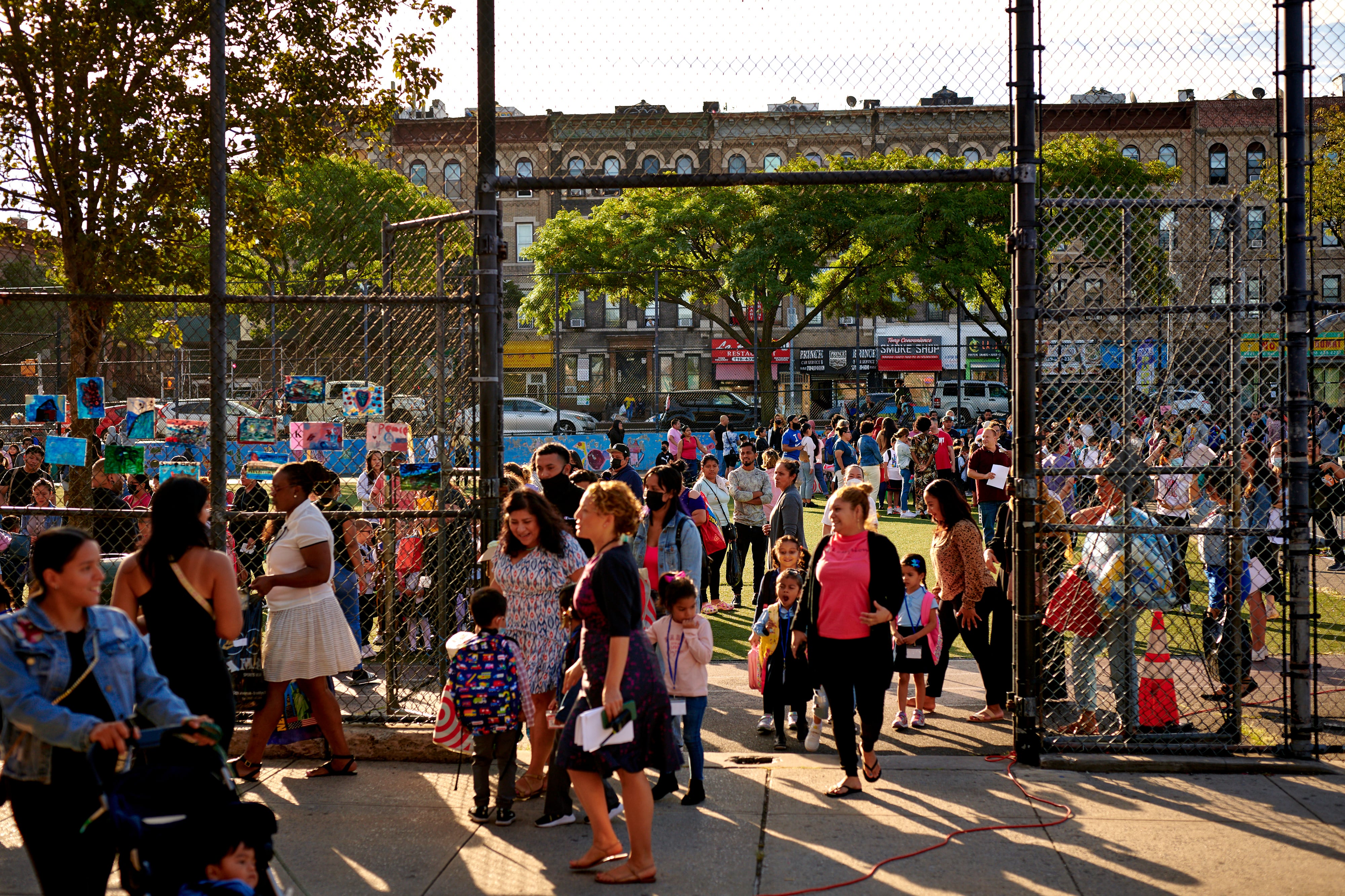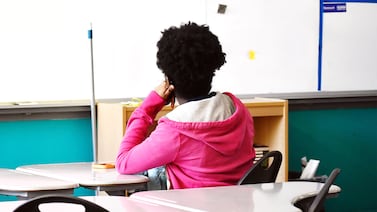For the first time in eight years, student enrollment in New York City’s public schools didn’t go down year over year.
Just over 912,000 students were enrolled in the city’s prekindergarten to 12th-grade programs last school year, up from about 906,000 the previous year, according to final enrollment data released last month by the city Education Department.
Whether that trend continues is an open question and a critical one for the city since funding from the state is based on student headcount. The direction of enrollment in the coming years will play a central role in a number of key policy questions, including how the city complies with a new class size law and whether officials will be forced to combine or close more small schools.
It’s not just the overall numbers that matter. The composition of city students is changing as demographic patterns shift, including the arrival of tens of thousands of immigrant students and a continuing, yearslong decline in Black enrollment — creating new sets of needs for schools.
Here are five things to know about New York City student enrollment based on the latest data:
The number of English language learners is growing
Perhaps the biggest single enrollment change over the past two years is the influx of tens of thousands of migrant students fleeing Latin America, West Africa, and other regions.
It’s difficult to get a precise number because city schools don’t ask for immigration status. Officials have used the number of new students living in temporary housing as a proxy measure – because most of the new arrivals reside in shelters – and say roughly 40,000 such students have enrolled over the past two school years.
Another measure of the new arrivals is the rising number of English language learners. That number grew from around 135,000 in the 2022-23 school year to over 148,000 last year, according to the new demographic data. English learners now comprise 16.3% of the school system, up from 13.3% in the 2019-20 school year.
That change has a host of implications for the system, as schools scramble to hire more bilingual staff and English as a New Language teachers, and schools that have never historically enrolled many English learners are suddenly opening their doors to recently arrived immigrant students.
Black and Asian American student enrollment are almost equal
The share of Black and Asian American students in city schools is now less than a percentage point apart, with Black students comprising 19.5% of the system, and Asian American students 18.7%.
That’s a seismic change from the 2011-12 school year, when 28% of city students were Black, and 16% were Asian American.
The shift reflects larger demographic patterns in the city. The Black population has dropped by 9% over the past two decades, while the Asian American population grew by nearly 8% between 2010 and 2020.
The city has recently rolled out new efforts to teach about Asian American history and culture. But the teaching force hasn’t kept up with the changing student demographics. Only 7.8% of city teachers identified as Asian American in 2022, making Asian American students the least likely of any of the four largest racial groups to have a teacher who shares their racial or ethnic background.
Poverty is up among students
The city Education Department uses two metrics to measure poverty among students – and both of them show a small but noticeable uptick in the past year.
The student poverty rate, a measure of how many kids receive free or reduced-priced lunch or come from families that qualify for government benefits, rose to 75% last year, after hovering around 73% or below for the previous four years.
Another measure called the “Economic Index,” which takes into account a wider range of factors including whether a student was homeless or entered high school with a first language other than English, also ticked up from 72.2% to 73.3% this year.
More students identify as nonbinary
For the first time two years ago, the city began tracking the number of students who identify as neither male nor female. In the 2022-23 school year, 102 students were listed in that category. Last year, the number rose to 178, which represents just 0.02% of the student population.
Students who identify as nonbinary report some of the lowest levels of satisfaction with their school experience of any student group on the annual school survey, and there are new efforts to open schools that are explicitly designed to serve LGBTQ+ and gender nonconforming students, (though one team’s proposal to open a new charter school did not get greenlit).
Long-term enrollment projections are pessimistic
In the short term, Education Department officials are optimistic that enrollment will remain steady, projecting a 0.2% increase next school year.
But long-term trends, like a declining birth rate and higher levels of out-migration, could spell big enrollment losses for the city school system in coming years, according to the annual enrollment projections commissioned by the city’s School Construction Authority, which oversees the building of new public schools.
The most recent demographic projections, which were released in December 2023 by the consultant Statistical Forecasting LLC, predict that pre-K-12 enrollment will fall to just over 660,000 by 2032, a drop of nearly 230,000 students, or 26%, over a decade. (The enrollment numbers in the projections differ from the demographic snapshot figures because they don’t include students in specialized programs in Districts 75 and 79.)
A spokesperson for the School Construction Authority said the demographic projections are combined with a separate analysis of new housing to come up with a final enrollment prediction, but didn’t immediately share a combined total count.
The demographic projections are based on birth rates, which have been declining in New York City for more than a decade, along with rates of migration in and out of the city.
New York City’s population of kids under age 5 shrank by more than 18% between 2020 and 2023, a loss driven partly by the pandemic but also by a lack of affordable housing and child care.
The pace of migrants arriving in the city has slowed in recent months, but continuing unrest in Venezuela could prompt more people to flee for the United States.
Forecasters noted that the steep enrollment losses from the pandemic and the historic influx of migrant students have produced unusual levels of fluctuation in recent years. They adjusted their models without incorporating those fluctuations into their future projections on the assumption they’re likely to be one-time events, according to their reports.
Michael Elsen-Rooney is a reporter for Chalkbeat New York, covering NYC public schools. Contact Michael at melsen-rooney@chalkbeat.org.







